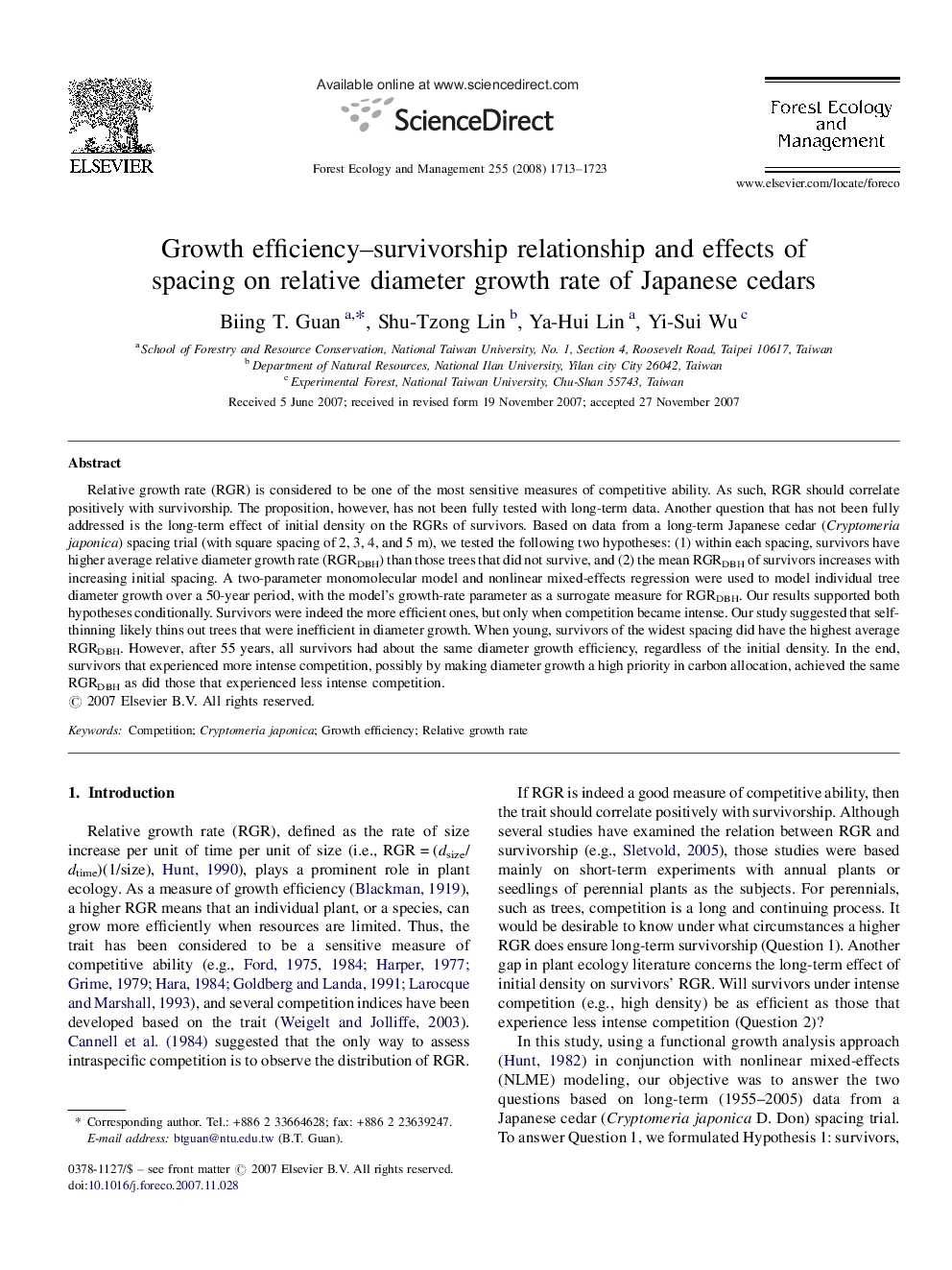| Article ID | Journal | Published Year | Pages | File Type |
|---|---|---|---|---|
| 89502 | Forest Ecology and Management | 2008 | 11 Pages |
Relative growth rate (RGR) is considered to be one of the most sensitive measures of competitive ability. As such, RGR should correlate positively with survivorship. The proposition, however, has not been fully tested with long-term data. Another question that has not been fully addressed is the long-term effect of initial density on the RGRs of survivors. Based on data from a long-term Japanese cedar (Cryptomeria japonica) spacing trial (with square spacing of 2, 3, 4, and 5 m), we tested the following two hypotheses: (1) within each spacing, survivors have higher average relative diameter growth rate (RGRDBH) than those trees that did not survive, and (2) the mean RGRDBH of survivors increases with increasing initial spacing. A two-parameter monomolecular model and nonlinear mixed-effects regression were used to model individual tree diameter growth over a 50-year period, with the model's growth-rate parameter as a surrogate measure for RGRDBH. Our results supported both hypotheses conditionally. Survivors were indeed the more efficient ones, but only when competition became intense. Our study suggested that self-thinning likely thins out trees that were inefficient in diameter growth. When young, survivors of the widest spacing did have the highest average RGRDBH. However, after 55 years, all survivors had about the same diameter growth efficiency, regardless of the initial density. In the end, survivors that experienced more intense competition, possibly by making diameter growth a high priority in carbon allocation, achieved the same RGRDBH as did those that experienced less intense competition.
